Abstract: Research on safety assessment methods based on risk principle to achieve comprehensive risk assessment of elevator safety conditions. The necessity of safety risk assessment for old elevators is discussed. The procedure of elevator safety risk assessment is established. The identification of elevator dangerous scenarios and risk sources is analyzed. How to determine the risk factor level and risk category of elevators and propose measures to reduce risks Establish a general overview of the safety assessment of elevators through a multi-level comprehensive evaluation model.
This article refers to the address: http://
Keywords: elevator; risk assessment; safety; multi-layer comprehensive evaluation model
1 The need to carry out the safety risk assessment of old elevators
The elevator is a transportation and transportation tool that is closely related to people's lives. At the same time, it is a special equipment with hidden dangers. Its safe operation is related to people's quality of life and safe production. Therefore, research on the safety assessment method of elevators is of great significance for ensuring people's quality of life and improving production efficiency.
At present, the old elevators mainly have the following problems:
1) High failure rate Old elevator control and drag technology is backward, product quality performance and reliability are poor. After more than ten years of use, it has entered the period of frequent failures, and the parts are aging and damaged. It is increasing year by year.
2) Large energy consumption Old elevators belong to early mechanical and electrical products, and the traction machine and speed control system consume a lot of energy. As the vertical and vertical equipment, the elevator has the potential energy and the kinetic energy during deceleration may be converted into electric energy. The development of elevator drive control technology and energy feedback technology makes the elevator energy saving. At present, the country is vigorously advocating energy conservation and emission reduction, and energy conservation and consumption reduction of elevators should also receive attention and attention.
3) The contradiction between the elevator safety specification and the existing large number of old elevators is the technical standard. GB7588 "Safety Code for Elevator Manufacturing and Installation" is the most important elevator standard in China. Since the first promulgation of China in 1987, it was in 1995 and 2003 respectively. In the year, the GB7588-1995 standard and the GB7588-2003 standard were revised, and many new safety requirements were added, and the old elevators could not meet some of the current standards.
4) Safety components and lines are severely worn and worn, and there are certain safety hazards. Many major components of old elevators have reached their service life in terms of design and quality, such as traction machines, wire ropes, brakes, relays, contactors, transformers, Car door door machine and landing door system, speed limiter - safety clamp, buffer, etc., and the number of elevators is insufficient to cause the elevator to run overload, the safety risk will be higher and higher.
5) The difficulty of daily maintenance, renewal and renovation of old elevators is mainly due to the cost problem. Many old elevators are not inspected, repaired and rebuilt in time; the management of the property company is not in place, and the faults are found, problems have occurred, and repairs cannot be made in time. Carry out updates and modifications that meet technical standards.
6) Lack of corresponding regulations and standards for scrapping old elevators So far, China has not established relevant standards for elevator scrapping. How long an elevator runs, what faults and problems exist should be scrapped, and there are no specific evaluation criteria and methods. Although there are many hidden dangers or failures in the old elevators, there is no basis for adopting compulsory retirement measures.
The safety demand for elevators is constantly improving. In this context, we propose an old elevator safety risk assessment, aiming at the safe operation of equipment, and detecting, evaluating and analyzing the problems of old elevators through advanced inspection instruments and methods. The cause of the failure is to provide customers with solutions and constructive suggestions.
2 Old elevator safety risk assessment procedures
At present, there is no unified and complete elevator safety assessment criteria and procedures in China. It is extremely urgent to establish a relatively complete set of guidelines, procedures and methods for elevator safety assessment.
The “Elevator Supervision and Inspection and Periodic Inspection Rules†(TSGT7001-2009) currently implemented by the state mainly carries out conformity verification on the current situation of the project affecting the safe operation of the elevator, and does not carry out in-depth analysis of the hidden dangers of the discovered elevators, so its prediction and prevention Elevator accidents and potential failures have a limited effect. Elevator safety risk assessment is the application of safety system engineering principles and advanced testing equipment to identify, detect and analyze the risk factors existing in the elevator operating system, and to characterize the risk factors that may affect the operational safety of the elevator system. Quantitative analysis predicts the existence of hazard sources, distribution locations, quantities, probability of failure and severity in the elevator system, which affects the safety status of the elevator system life cycle, and proposes countermeasures and measures to reduce risks.
The safety risk assessment procedures mainly include: preparation stage, identification and analysis of hazards and harmful factors, qualitative and quantitative evaluation, safety countermeasures, risk assessment conclusions and recommendations, and risk assessment report. The flow chart is shown in Figure 1.
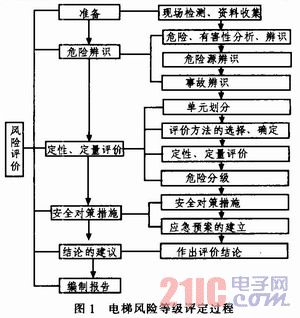
1) Preparation stage: Identify the target and scope of the assessment, sign the evaluation agreement, determine the purpose of the assessment, the topic and related factors, identify the members of the risk assessment team, and collect relevant information.
2) Identification and analysis of dangerous and harmful factors: Identify, detect and analyze dangerous and harmful factors according to the evaluated elevator system and related processes, determine the location of danger, harmful factors, the way of existence, the way of accidents and their changes law.
3) Qualitative and quantitative assessment: On the basis of identification and analysis of dangerous and harmful factors, the evaluation unit is divided and a reasonable evaluation method is selected to qualitatively and quantitatively evaluate the possibility and severity of accidents in the elevator system and related processes.
4) Propose safety measures: Based on the results of qualitative and quantitative assessments, propose technical and management measures and recommendations to eliminate or mitigate dangerous and harmful factors.
5) Forming risk assessment conclusions and recommendations: list the main hazards and harmful factors, point out the major risk factors that should be guarded against by the elevator system and related processes, and clarify the main safety measures and residual risk response methods that should be paid attention to by the use and management.
6) Preparation of risk assessment report: Prepare a corresponding risk assessment report based on the results of the risk assessment.
3 Identification of elevator risk scenarios and risk sources
According to Figure 1, the elevator risk rating process starts from the safety requirements of the elevator to identify the risk scenarios and risk sources. The evaluation unit is divided into the use management and maintenance assessment, the work environment assessment, the traction capability assessment, the braking capability assessment, and the limit. Speedometer-safety clamp reliability assessment, elevator control system evaluation, car door and landing evaluation, main components and} safety device evaluation, energy consumption assessment, operational performance evaluation, etc., the purpose is to exist in the elevator operating system Risk factors are identified and analyzed.
There are many methods for hazard identification. Each method has its purpose and scope of application. Each method can identify different hazards in some elevator systems. In the process of hazard identification, it should be used in combination with specific situations. Examples of the methods used in this project identify the hazards in the elevator system:
1) Relevant standards. Elevator hazard identification can be carried out through safety requirements in standards such as "Safety Code for Elevator Manufacturing and Installation" (GB7588-2003).
2) Check and collect records of faults and accidents. Check out the history of elevator failures, accidents, and information and data that can be used to aid in qualitative and quantitative analysis. Through the method of accident tree analysis and other methods to find the causes, conditions and laws related to the accident, the dangers related to the accident in the elevator system can be identified.
3) Practice test. The personnel who are familiar with safety technology knowledge and safety regulations and standards use advanced instruments to conduct on-site observation and inspection of the elevator system, and can find some existing dangers and collect data.
Others include work task analysis (JHA), fault type and impact analysis, hazard and operability studies, what-if analysis, graphical methods, and other commonly used hazard identification methods.
4 Elevator risk category assessment and risk reduction measures
According to the elevator risk rating process in Figure 1, the elevator risk factor level, risk category assessment and risk reduction measures are required for the elevator safety risk assessment.
According to the standard GB24804-2009 "Improving the safety of elevators in use" and the standard GB/T 20900-2007 "Elevator, escalator and moving walkway risk assessment and reduction methods", Table 1 gives the risk factor assessment A description of the severity to provide an approximate quantitative assessment of the severity of the injury. Use the letter S to indicate the risk factor to assess the degree of damage.
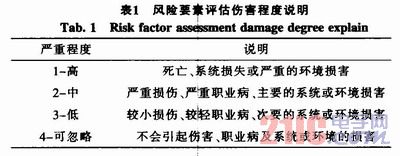
Table 2 gives a description of the probability levels specified in the risk factor assessment to provide an approximate quantitative assessment of the probability of injury occurring under a certain episode. The letter P is used to indicate the risk factor evaluation probability level.
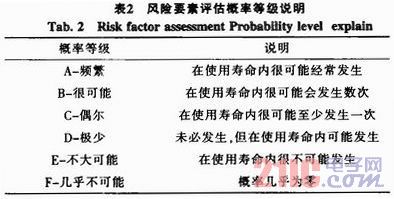
Based on the assessed risk factor level, the risk is assessed by determining the corresponding “risk categoryâ€. The risk categories are classified according to Table 3.
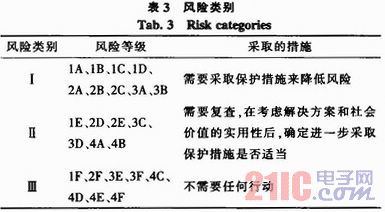
When selecting the risk to be assessed, the risk assessor should choose the highest risk level, not the highest severity. For example, the risk that causes the risk to be assessed as 2C (risk category "I") is higher than the risk of "1E" (risk category "II"), even if the risk level assessed as 1E has a higher severity, it should first Consider protection measures for 2C risks. However, risk 1E should still be of concern.
The classification and assessment of risk categories is defined only from a security perspective, but the risk reduction is also subject to economic factors. The measures taken to reduce each risk vary in cost, so that the risk reduction measures taken may be changed. Big. Due to different factors such as the use environment, frequency of use and maintenance of each elevator, the degree of damage, probability level and risk category of the risk assessment factor level may be different, and the protective measures (risk reduction measures) may also be different. Factor risk assessment, safety status rating, risk category assessment and risk reduction measures should be analyzed according to each elevator situation. Table 4 gives an example of evaluating the condition of an elevator.

5 Assessment conclusions and reports
According to the elevator risk rating process of Figure 1, after completing the “elevator risk plot identification, factor assessment, safety status level, risk category assessment and risk reduction measuresâ€, the comprehensive risk assessment results of Figure 1 are formed to form a safety assessment conclusion.
Use the developed special software to analyze, diagnose, evaluate and manage the relevant links of the evaluation process. According to the results of the safety assessment, the economical and timeliness of the rectification measures are analyzed by special software packages, so as to adjust, repair, and Retrofitting or updating scrap provides a viable basis. Figure 2 is a schematic diagram of a multi-layer comprehensive evaluation model for an elevator system.
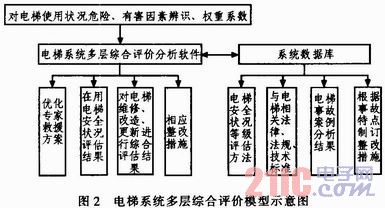
Therefore, the comprehensive evaluation and analysis system based on the multi-level comprehensive evaluation model analyzes the safety status of the elevator scientifically, objectively and fairly by establishing a mathematical model of elevator risk and sharing relevant information in the system database. According to the safety risk assessment status of “elevator risk situation identification, factor risk assessment, safety status level, risk category assessment and risk reduction measuresâ€, the safety assessment conclusions are analyzed, and the main faults and causes of elevators are comprehensively determined. The results of the assessment indicate the major risk factors that should be highlighted and propose recommendations for risk reduction measures, repairs or retrofits.
The elevator safety assessment report mainly includes the basis for preparation, the division of evaluation units, the analysis of elevator risk factors, risk rating, countermeasures, evaluation recommendations and conclusions.
6 Conclusion
As the safety requirements of elevators in the society are constantly improving, the safety of elevators is becoming more and more important. In order to fully understand the dangers of the system, it is necessary to conduct a detailed analysis of the system and comprehensively evaluate the system based on the system analysis. Finally, through the evaluation results to understand the potential dangers and weaknesses in the system, and finally determine the security status of the system, providing an important basis for future security management. Therefore, attaching importance to elevator safety is of great significance for the protection of life and property and normal production and life. To avoid the occurrence of elevator accidents, it is necessary to find the hidden dangers from the root cause, and promptly remedy the situation. This is exactly what the elevator safety assessment needs to do.
Led Curtain Display is a creative design and upgrade version of outdoor led display& screens. this Led Strip Curtain series of products have features of light weight, energy-saving, high transparency, fast installation and easy maintenance. With advanced and top level of led diode from LightKing, PrivaLed's outdoor curtain LED displays have low power consumption and high brightness. In this ways, It is very stable and durable during lifetime.

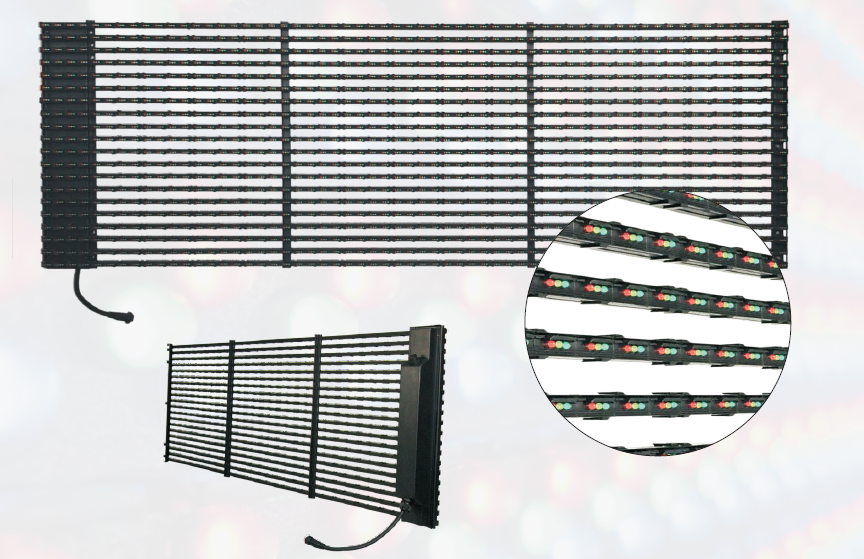
For better understanding Led curtain display main advantages,
High Water-Proof grade applied with IP65 water-proof standard, make your screen working perfectly without problems even in heavy rain.
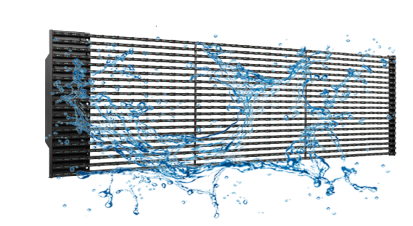
Light-weight cabinet The cabinet is about 5-8 KG per square meter, 60% less weight compared with traditional tile and have greatly reduce the load bearing pressure of the structures.
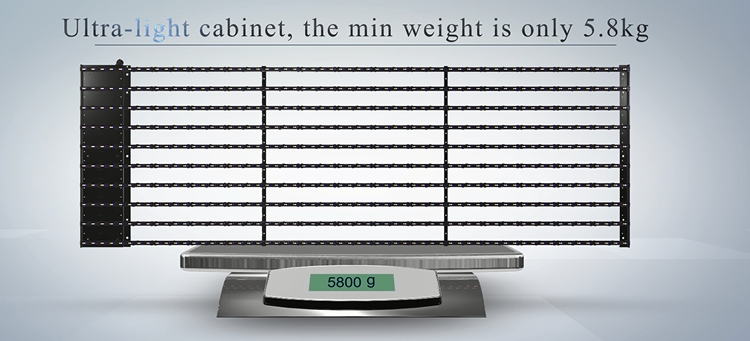
High transparency rate Louver design, make the transparency rate up to 72%, and this design greatly satisfied people`s curiosity to see outside from inside.

High brightness8000nits for P25, could be used absolutely for outdoor under strong sunshine.
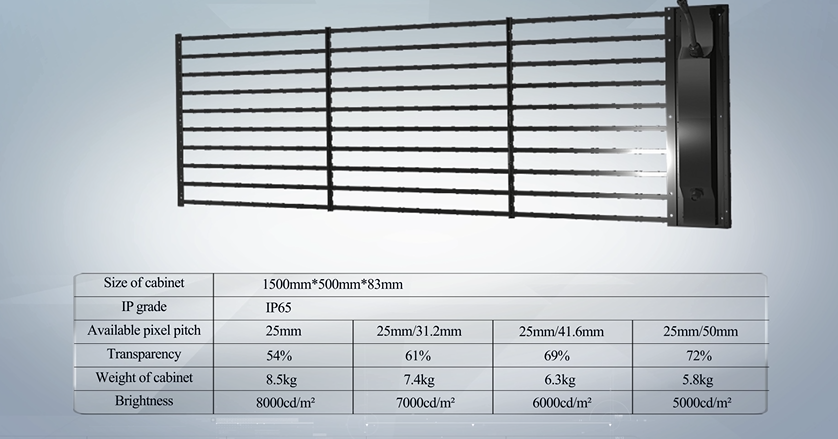
Fast & easy installation No need steel structure, Solid and simple assemble style, make installation and maintenance quick and easy. It stands firmly even in big wind.
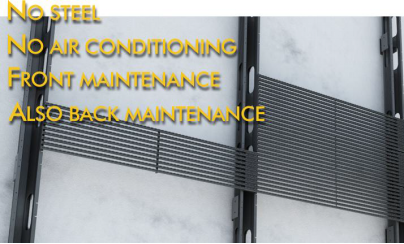
Installation Steps
Installation Steps
1 Fitting the steel structure: fitting it on the wall firmly
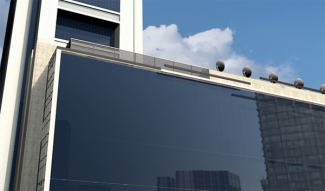
2 Attach the U-Tile frame to the structure firmly
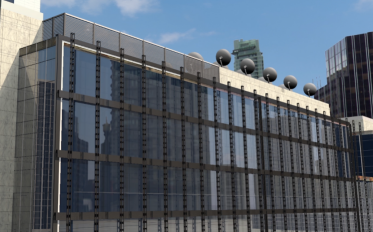
3Lock the frame on the structure by screws

4Hanging the upper right hooks of the cabinet to the card slot of the right U-tile Frame.
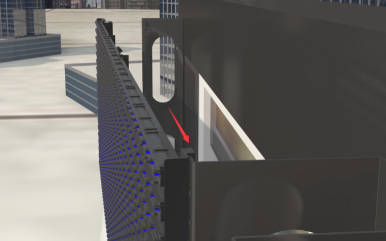
5
Buckle the left position pins of the cabinet to the location holes of the left side of the U-tile frame
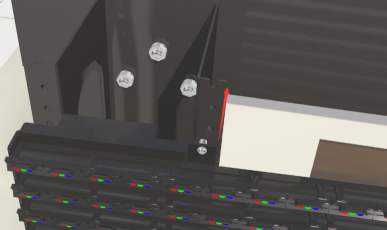
6 Aim at the screw holes for the front service installation, fitting 6 screws on the U-tile frame through the cabinet from the front.
(This is a procedure of front service, this cabinet support also available for back maintenance)
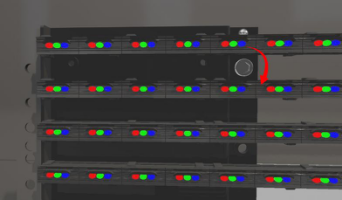
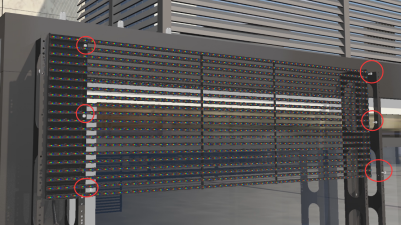
7 Then finished installation for one cabinet. The same as the next cabinet.
8 Cable Connection.
Connect the male-plug (with cable) of the next cabinet to the female-plug of its upper cabinet firmly.
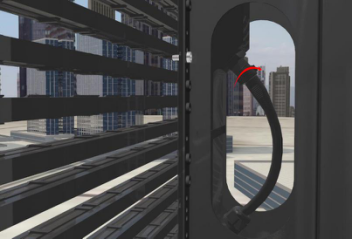
9 Using the same mode to finish the rest connection (five-pins cable), then the installation work for a complete LED display is finished.
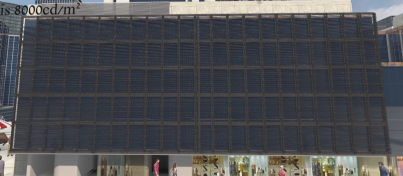
After-sale maintenance
1 The cabinet support single trip maintenance. If there any bad LED lamp or damage on single strip, you can remove the strip separately without take out the cabinet and control box.
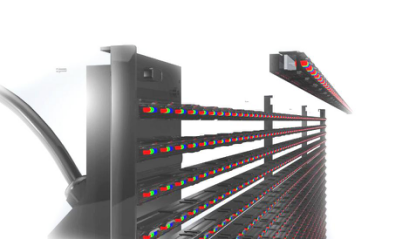
2, Cabinet support front & back installation and maintenance. If there any problem on single cabinet, you can remove the cabinet from the front & back of the screen.
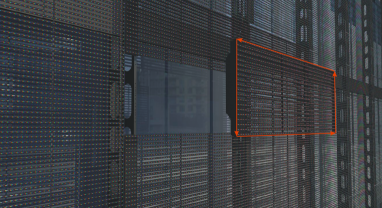
3 ,If there damages on the control box, you need remove the cabinet and open the cover of the power supply box to do repair & exchange work.
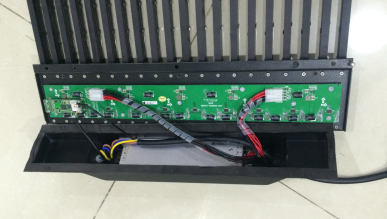
Cabinet size:

Package: Wooden case 1 for 10 led strip curtain cabinets.
Package size:

This outdoor LED Strip curtain display series product are widely used for building facade, behind of glass wall, in front of glass wall, led billboard& signs and on top of building.
Welcome to visit our factory in Nansha Guangzhou China. Please contact us for any questions or inquiries!
Led curtain display Parameter
Model number
Pixel pitch
Pixel configuration
Size of block module
Resolution of module
Density
Cabinet material
Size of cabinet(l*h*t)
Weight of cabinet
Driving method
Best viewing angle
Max power consumption
Colors
Gray scale
Color temperature
Control method
Driving device
Frame frequency
Refresh frequency
Brightness
Working voltage
Working temperature
Out-of control point
Brightness Control
IP grade
Mtbf
Transparency
LED Curtain Display
Led Curtain Display,Outdoor Led Curtain For Building,Led Curtain Wall Display,Led Strip Curtain
Shenzhen Priva Tech Co., Ltd. , https://www.privaled.com